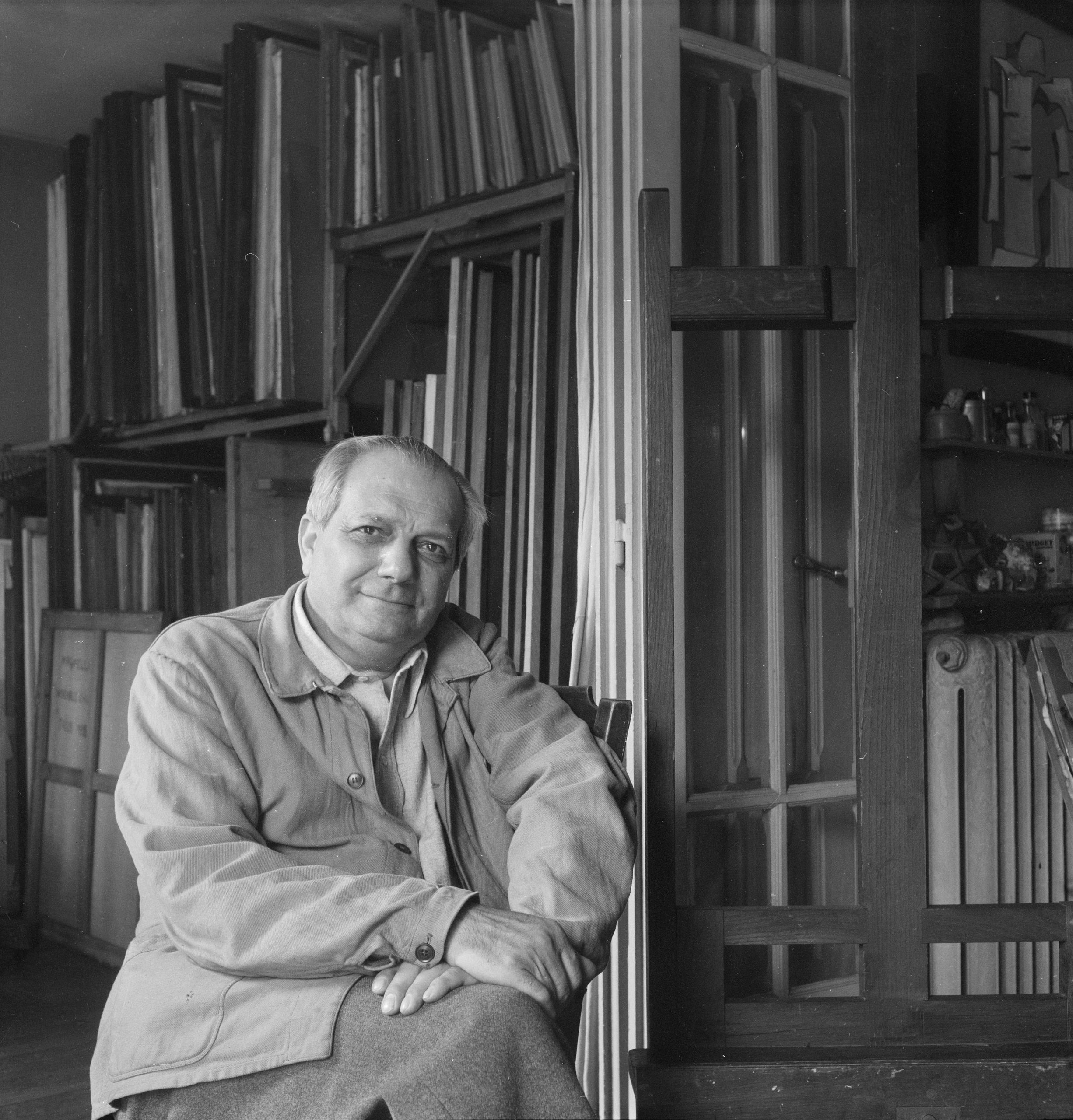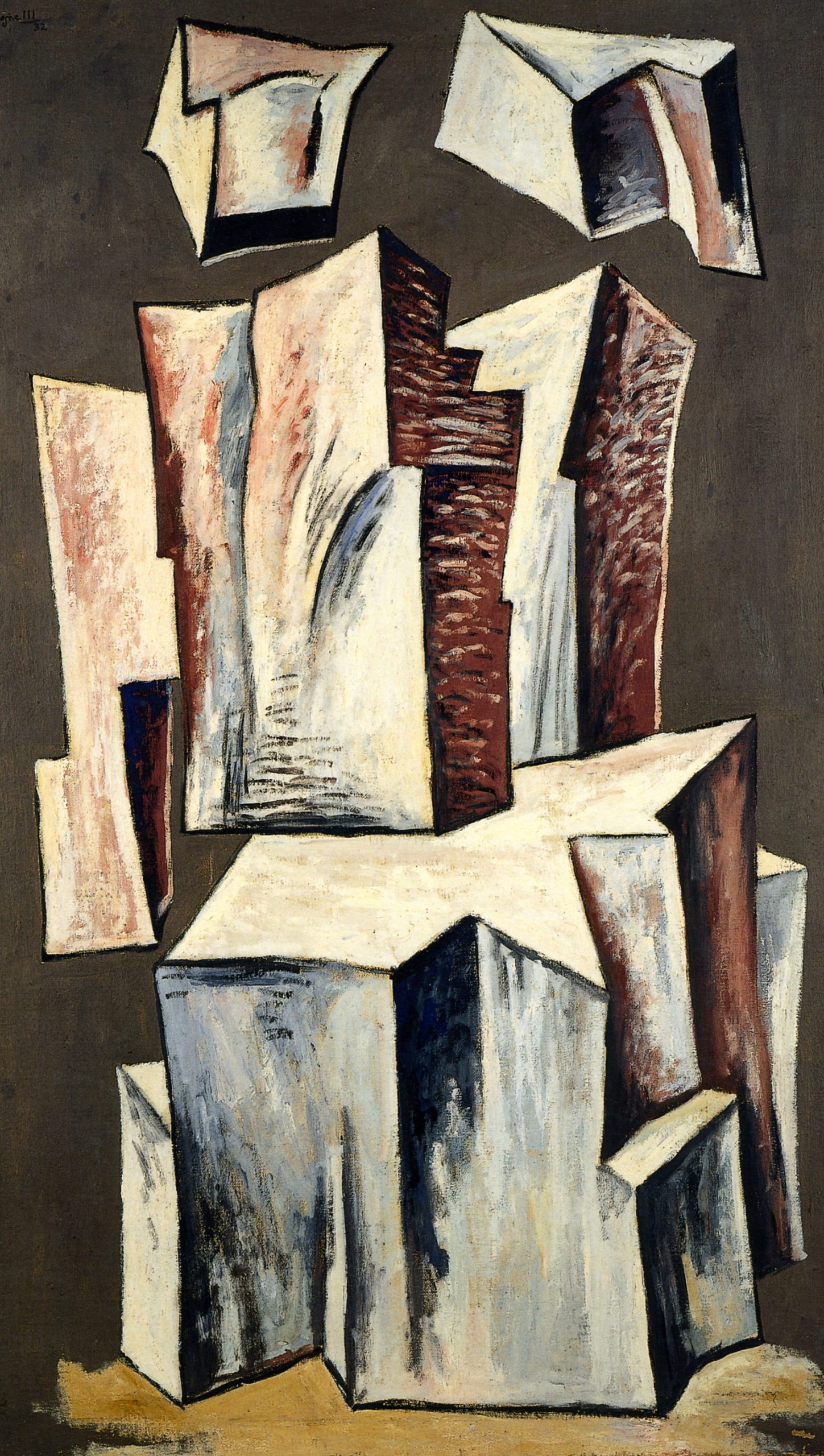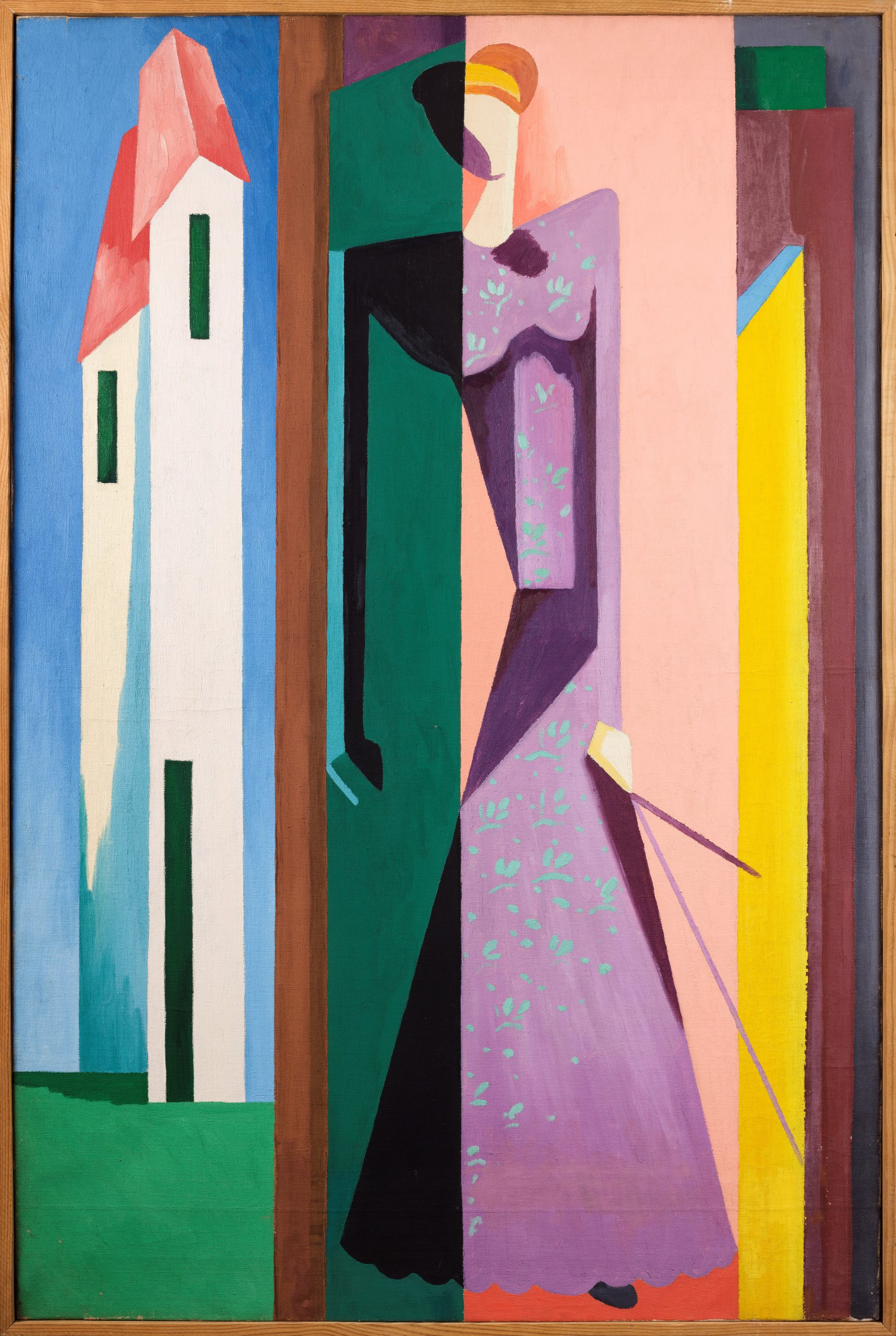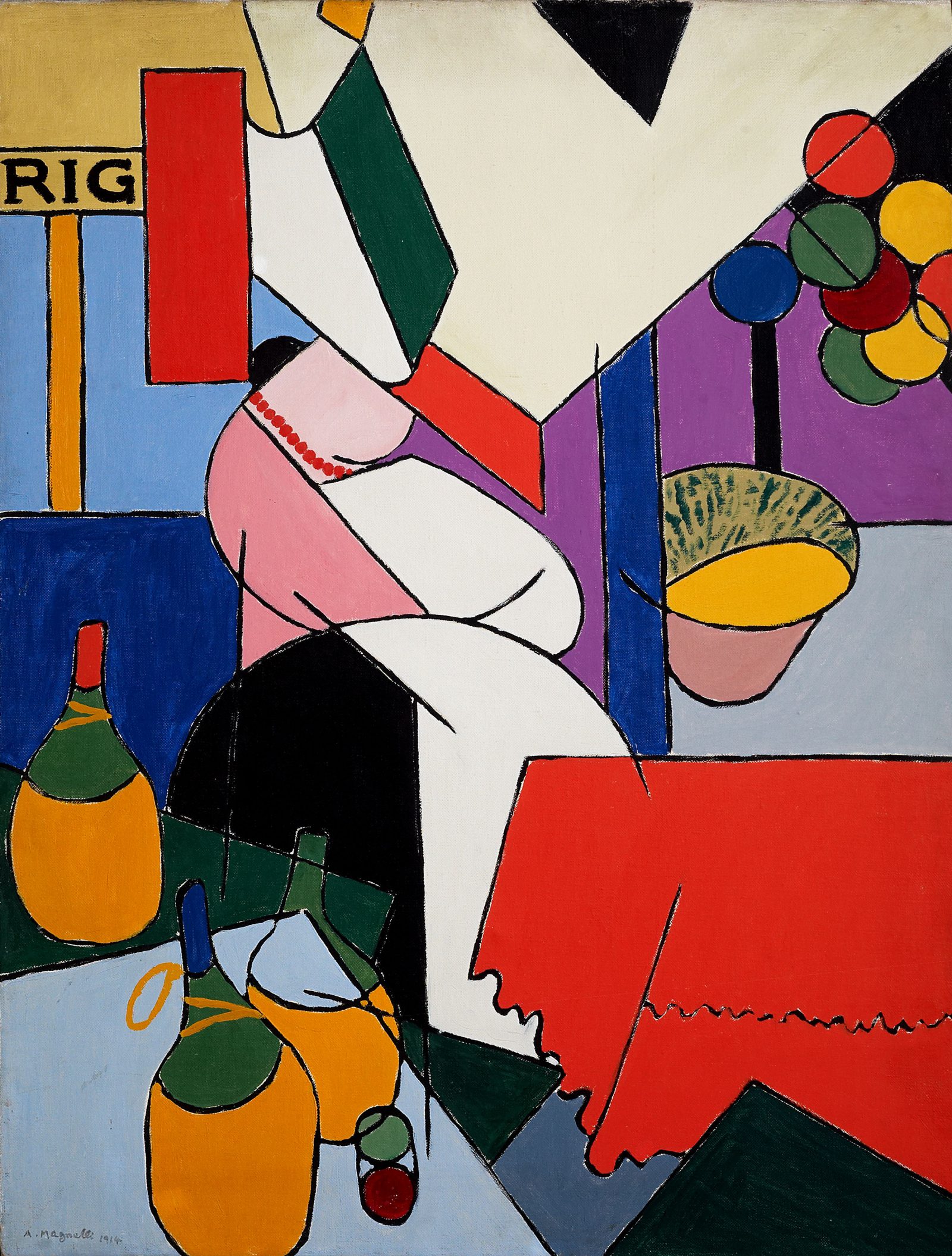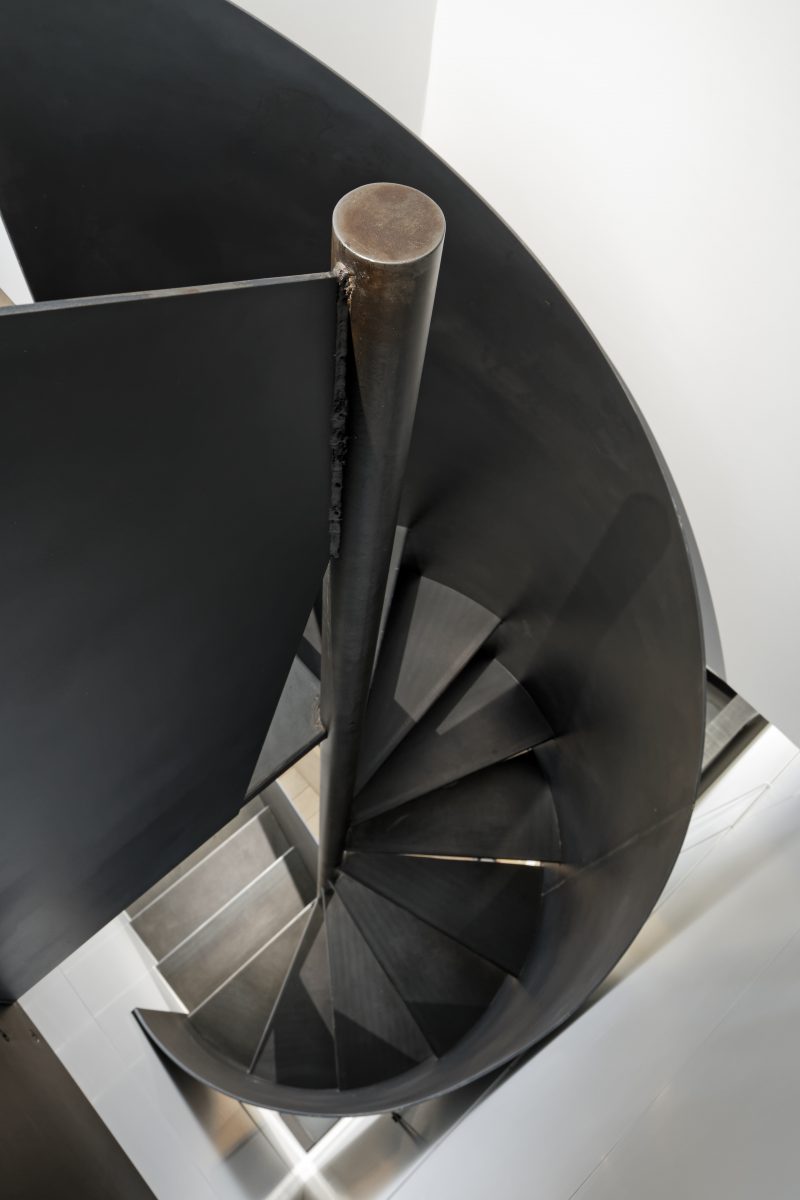Retrospectives were held from 1954: Brussels (1954), the Stedelijk Van Abbe Museum, Eindhoven (1954), Musée Antibes (1955), Zurich and Florence (1963), Essen (1964), Kunsforeningen, Copenhagen and Musée d’Art moderne, Paris (1968), Musée Ancienne Douane, Strasbourg (1969). Catalogues.
In Paris, Magnelli exhibited in 1957 at the Galerie Berggruen and the Galerie de France, and again in 1959 at the Galerie de France, which the following year published Magnelli by François Le Lionnais. Prix de la Critique in 1954. First Grand Prize for Foreign Painting at the Sao Paulo Biennial in 1955. Guggenheim Prize for Italy in 1958. These awards brought Magnelli an international audience. From 1959 he lived and worked in his villa at Meudon, dividing his time between Paris and Provence. His works are grouped in series.
He participated regularly in the Salon des Réalités Nouvelles from 1946.
In 1968, Jean Clay summed up the considerable contribution made by Magnelli’s work. “He is both for the curve and for the straight line, for the subjective form and for discipline. His forms are simple and massive without being impersonal; dynamic but placed against a background that stabilises them; slender but endowed with a certain static weight (Jean Cassou spoke of ‘writing in bronze’). By attempting to reconcile the irreconcilable, Magnelli serves as a guide to an entire generation who discover abstraction more than thirty years after its beginnings and who, initially, need a mediator who is not a fanatic. This explains the historic role of Magnelli who is very much admired by the young” (Magnelli chez lui, Connaissance des Arts, March).
1988 Magnelli, exposition du Centenaire. Palais des Papes, Avignon. Catalogue. Texts by Daniel Abadie and Maurice Besset. Consult bibliography and list of exhibitions.
1989 Magnelli. Thèmes et variations. Chapelle de la Sorbonne. Paris. Catalogue by Daniel Abadie.
Magnelli’s work is present in many museum collections including: Paris, National and Municipal d’Art Moderne, Bibliothèque Nationale (donation Mrs Alberto Magnelli. 1980 Exposition des estampes et de l’œuvre graphique. Catalogue) – Grenoble – Vallauris – Fondation Maeght Saint-Paul-de-Vence – Rome – Turin – Copenhagen – Zurich – Liège – Rio de Janeiro – Sao Paulo – La Chaux-de-Fonds.
- André Verdet: Magnelli, Le Musée de Poche, G. Fall, 1961.
- Murillo Mendes: Alberto Magnelli. Ed. dell’Atheneo, 1964.
- Anne Maisonnier-Lochard. Catalogue raisonné de l’œuvre peint d’Alberto Magnelli 1907–1969. Paris, Classiques du XXe siècle. Musée National d’Art Moderne, 1975. Catalogue raisonné de l’œuvre gravé. Paris. Bibliothèque Nationale, Paris, 1980.
